Abstract
Behavioral assessment procedures were used to prescribe and evaluate treatments of maladaptive behavior for 2 children with severe multiple handicaps. In Experiment 1, the results of an assessment of reinforcer preference were used in conjunction with a functional analysis of the conditions maintaining self-injurious behavior to prescribe a treatment for a child with severe disabilities. The treatment procedure involved the use of a pressure-sensitive microswitch to activate reinforcing stimuli during two solitary conditions, during which self-injurious behavior had occurred at high rates. The results were evaluated with a multiple baseline across settings design and indicated that self-injury decreased with concomitant increases in microswitch activation. Results were maintained at 6 weeks, 8 weeks, and 6 months. In Experiment 2, the results of behavioral assessments of reinforcer preference and self-injurious behavior were combined to develop a treatment for a second severely handicapped child, who exhibited high rates of self-injury in demand situations. This treatment was evaluated with a multiple baseline across tasks design and resulted in the elimination of self-injury for up to 15 months.
Full text
PDF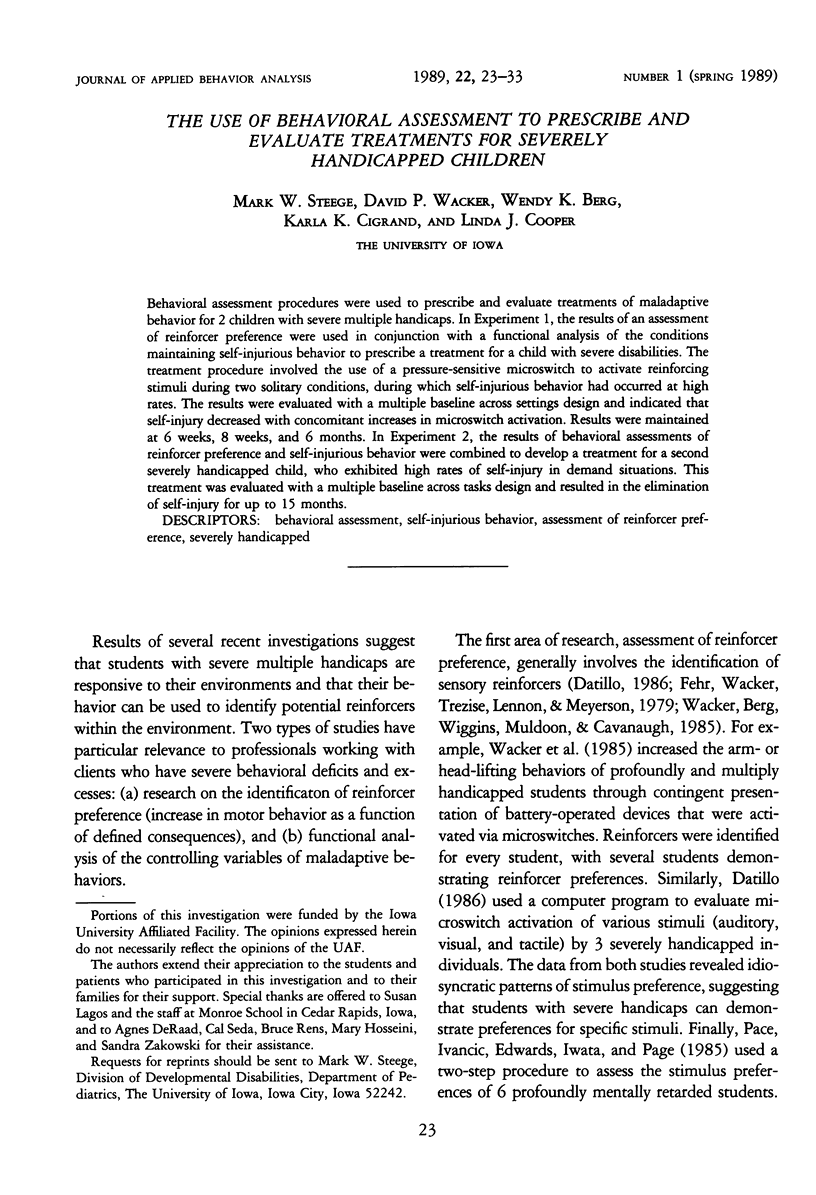
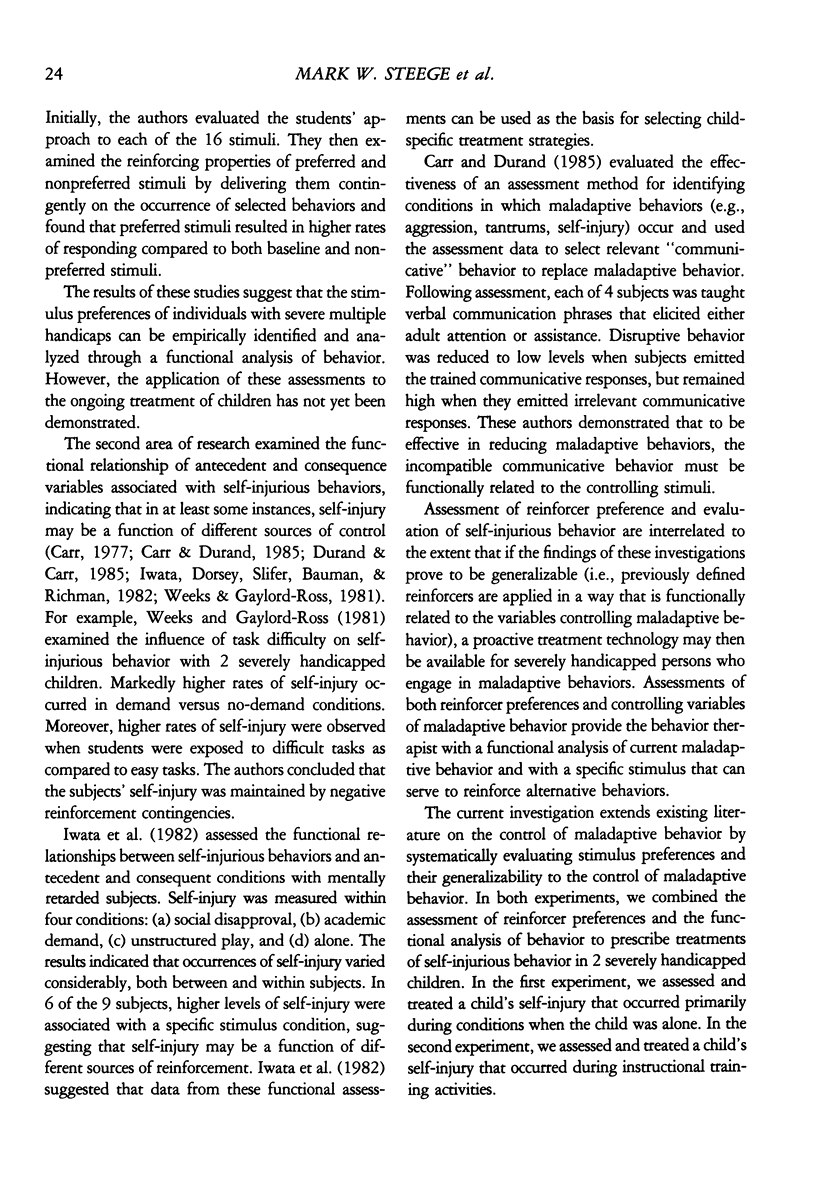
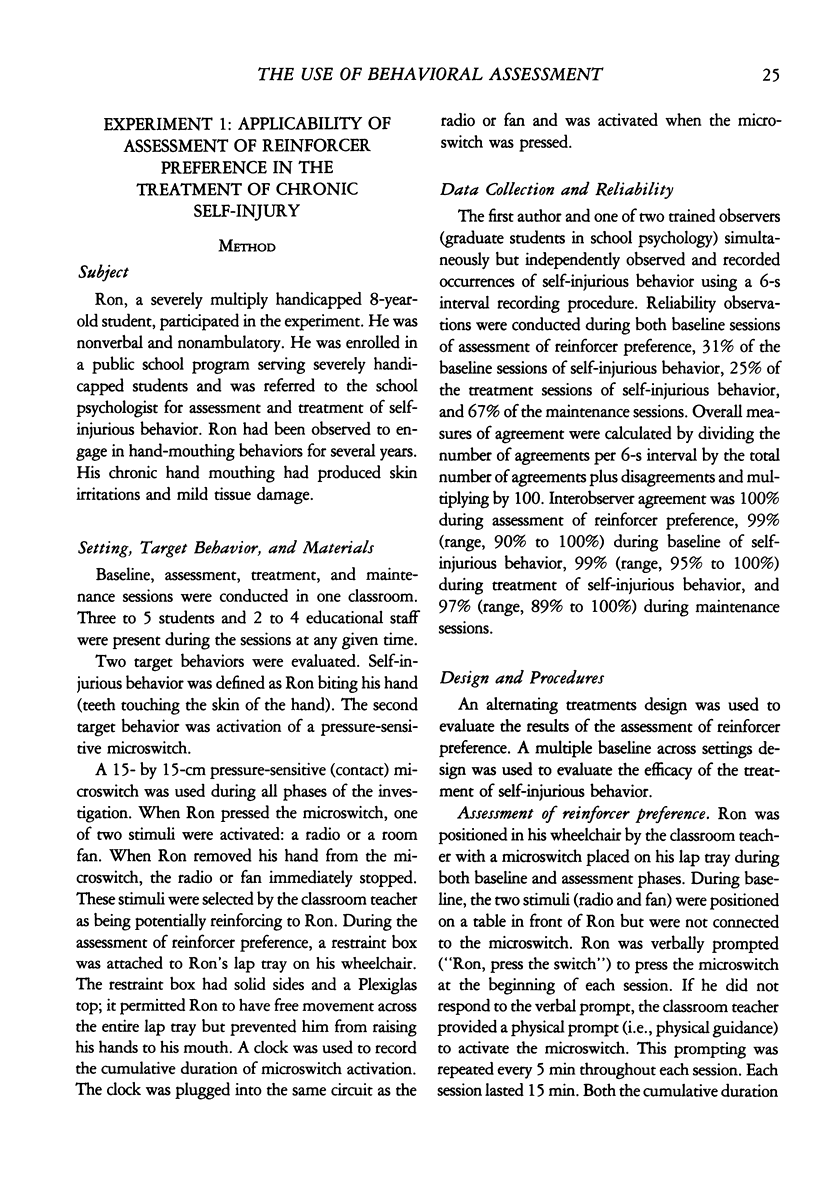
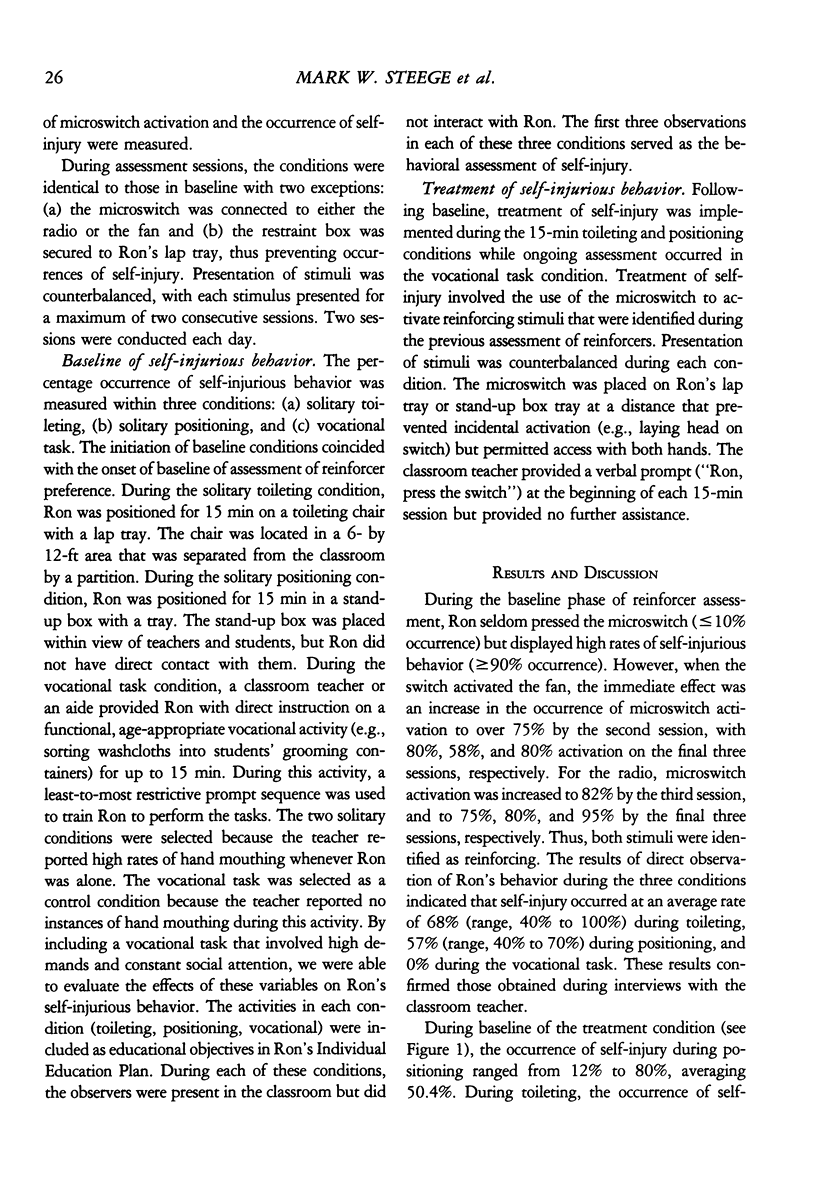
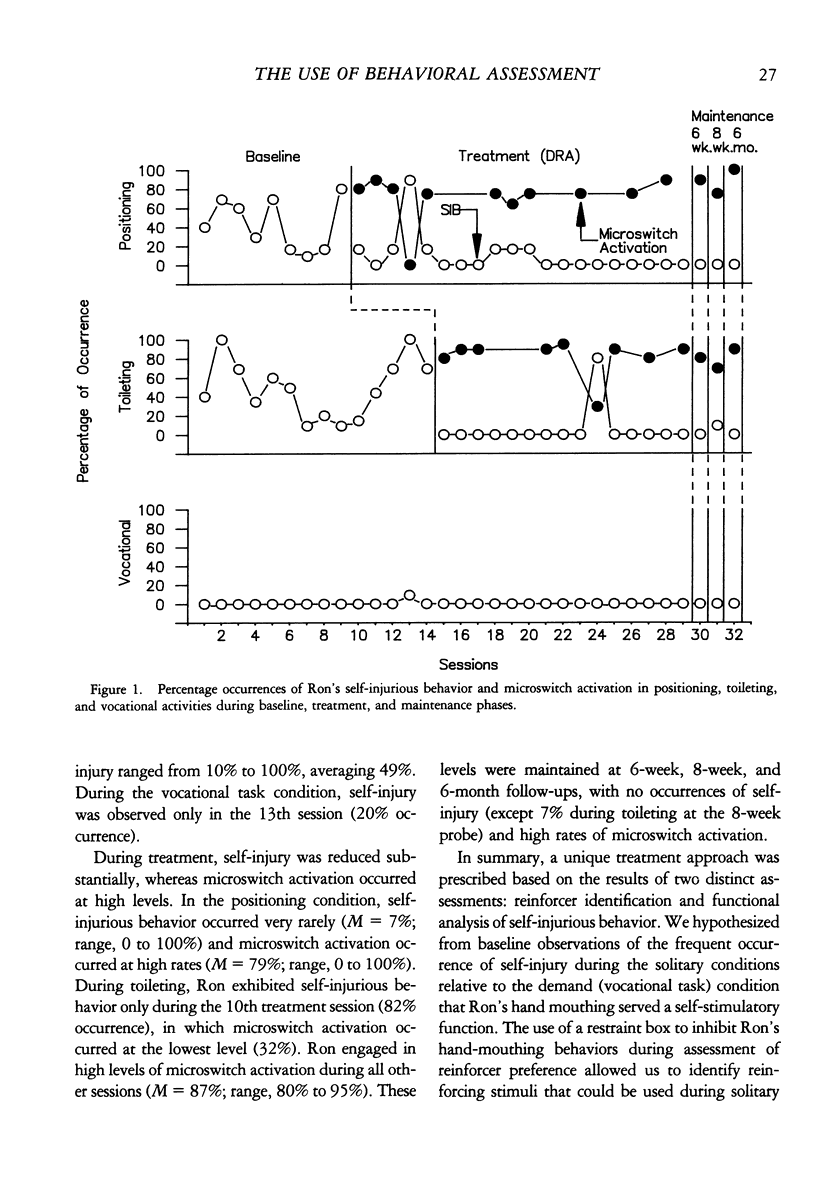
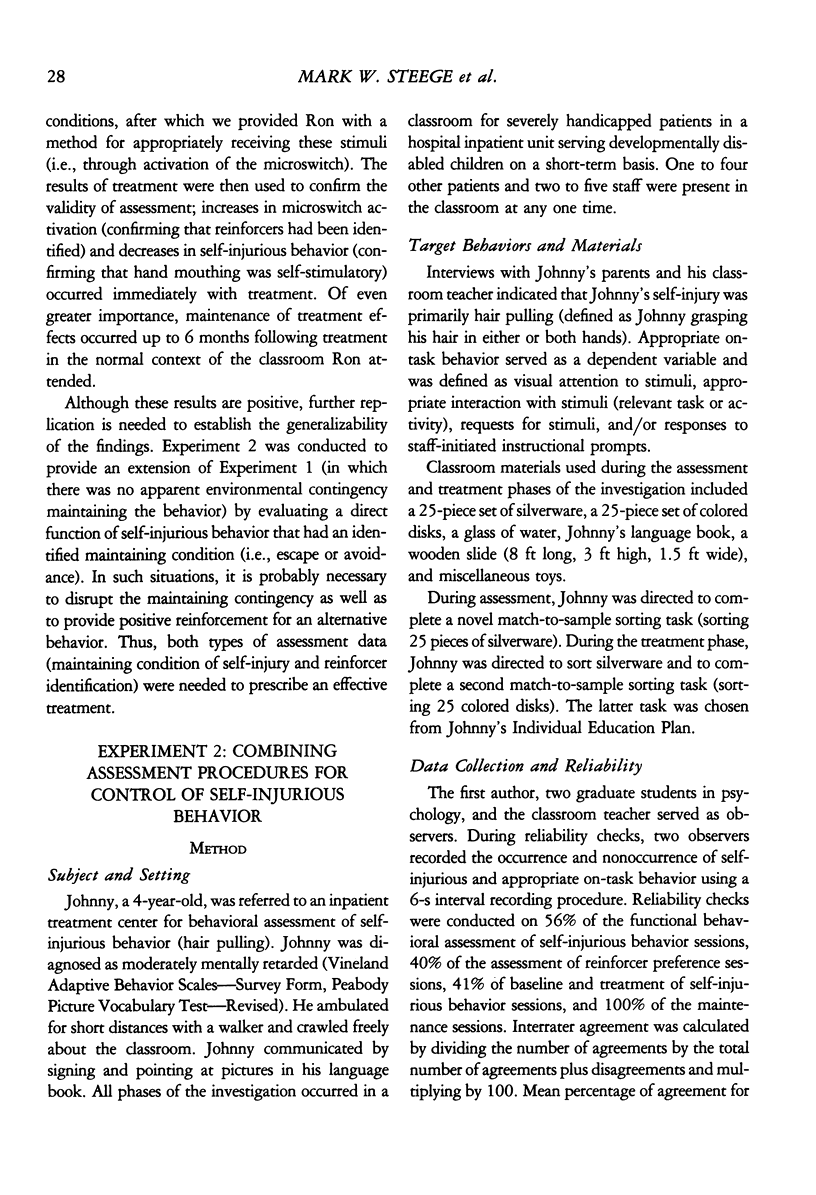
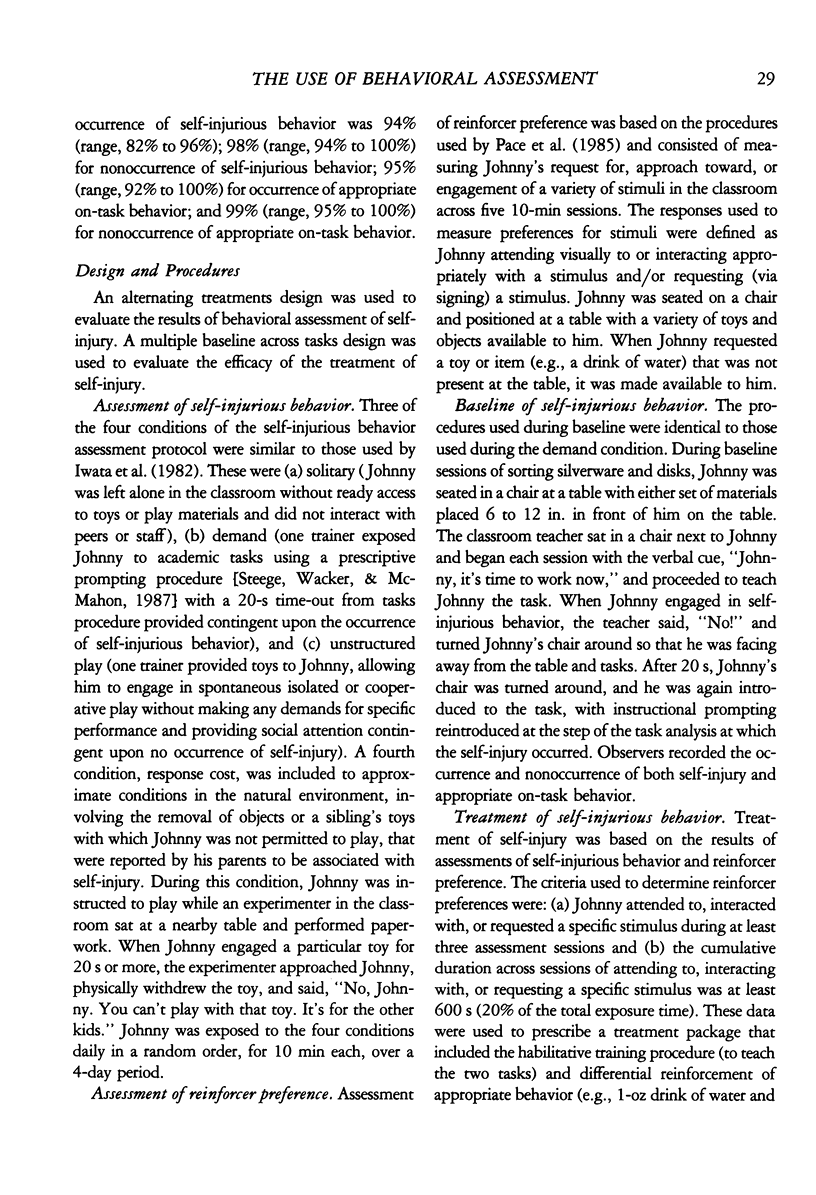
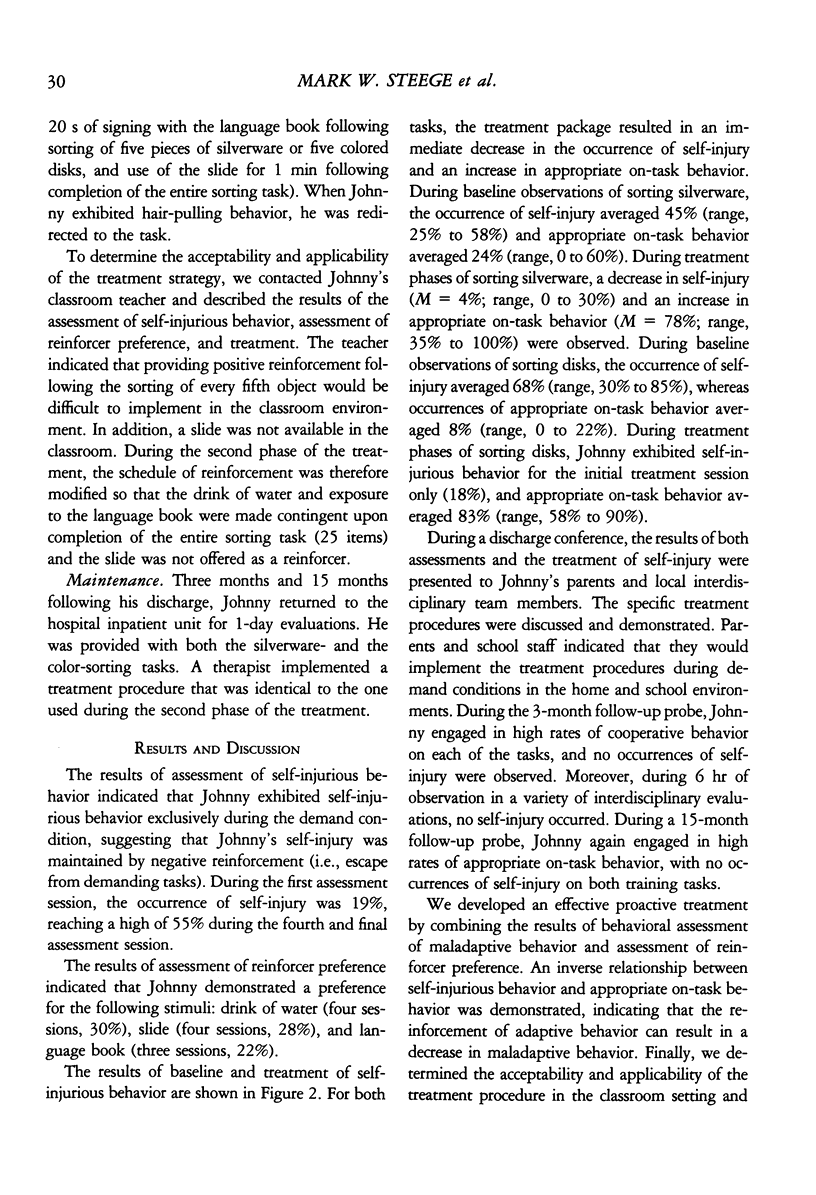
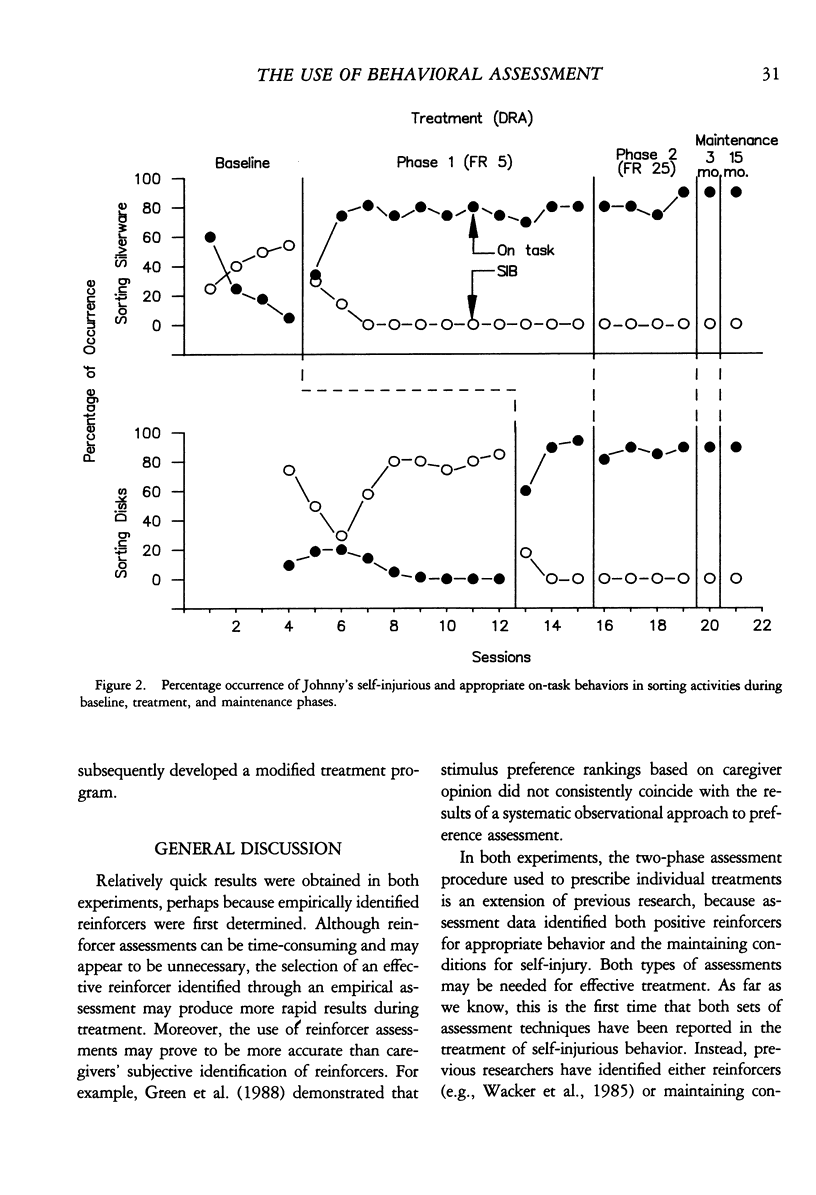
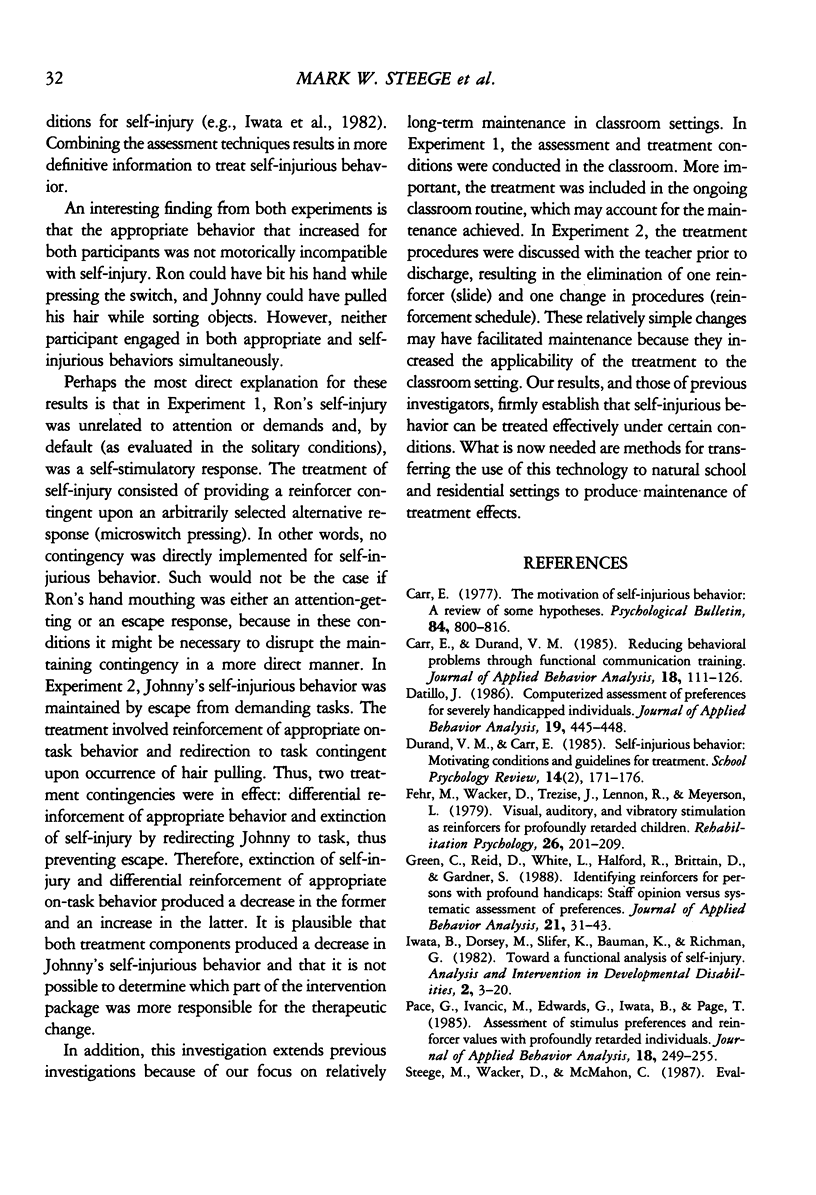
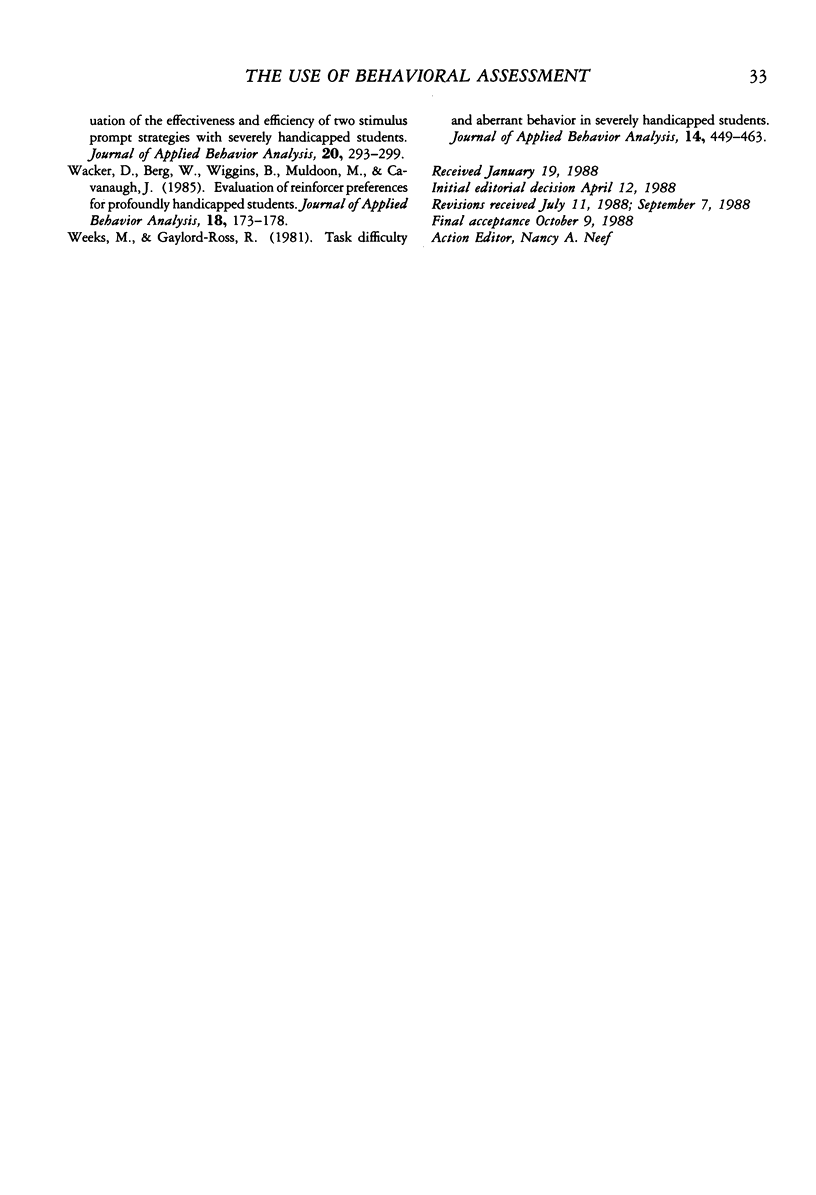
Selected References
These references are in PubMed. This may not be the complete list of references from this article.
- Carr E. G., Durand V. M. Reducing behavior problems through functional communication training. J Appl Behav Anal. 1985 Summer;18(2):111–126. doi: 10.1901/jaba.1985.18-111. [DOI] [PMC free article] [PubMed] [Google Scholar]
- Carr E. G. The motivation of self-injurious behavior: a review of some hypotheses. Psychol Bull. 1977 Jul;84(4):800–816. [PubMed] [Google Scholar]
- Dattilo J. Computerized assessment of preference for severely handicapped individuals. J Appl Behav Anal. 1986 Winter;19(4):445–448. doi: 10.1901/jaba.1986.19-445. [DOI] [PMC free article] [PubMed] [Google Scholar]
- Green C. W., Reid D. H., White L. K., Halford R. C., Brittain D. P., Gardner S. M. Identifying reinforcers for persons with profound handicaps: staff opinion versus systematic assessment of preferences. J Appl Behav Anal. 1988 Spring;21(1):31–43. doi: 10.1901/jaba.1988.21-31. [DOI] [PMC free article] [PubMed] [Google Scholar]
- Pace G. M., Ivancic M. T., Edwards G. L., Iwata B. A., Page T. J. Assessment of stimulus preference and reinforcer value with profoundly retarded individuals. J Appl Behav Anal. 1985 Fall;18(3):249–255. doi: 10.1901/jaba.1985.18-249. [DOI] [PMC free article] [PubMed] [Google Scholar]
- Steege M. W., Wacker D. P., McMahon C. M. Evaluation of the effectiveness and efficiency of two stimulus prompt strategies with severely handicapped students. J Appl Behav Anal. 1987 Fall;20(3):293–299. doi: 10.1901/jaba.1987.20-293. [DOI] [PMC free article] [PubMed] [Google Scholar]
- Wacker D. P., Berg W. K., Wiggins B., Muldoon M., Cavanaugh J. Evaluation of reinforcer preferences for profoundly handicapped students. J Appl Behav Anal. 1985 Summer;18(2):173–178. doi: 10.1901/jaba.1985.18-173. [DOI] [PMC free article] [PubMed] [Google Scholar]
- Weeks M., Gaylord-Ross R. Task difficulty and aberrant behavior in severely handicapped students. J Appl Behav Anal. 1981 Winter;14(4):449–463. doi: 10.1901/jaba.1981.14-449. [DOI] [PMC free article] [PubMed] [Google Scholar]


